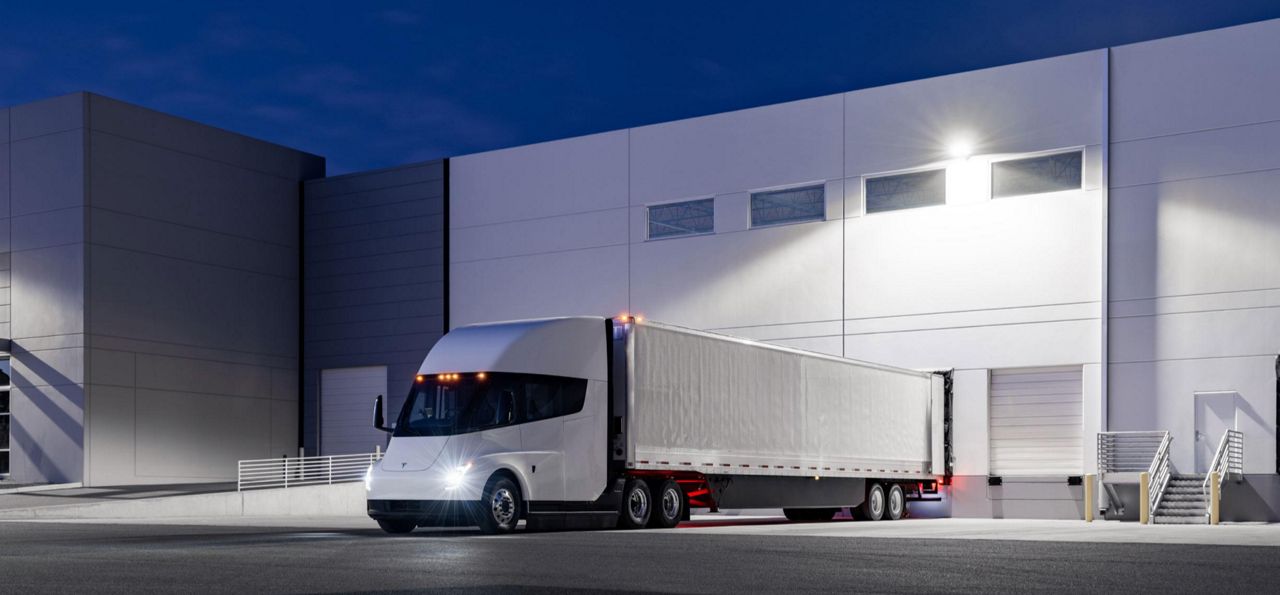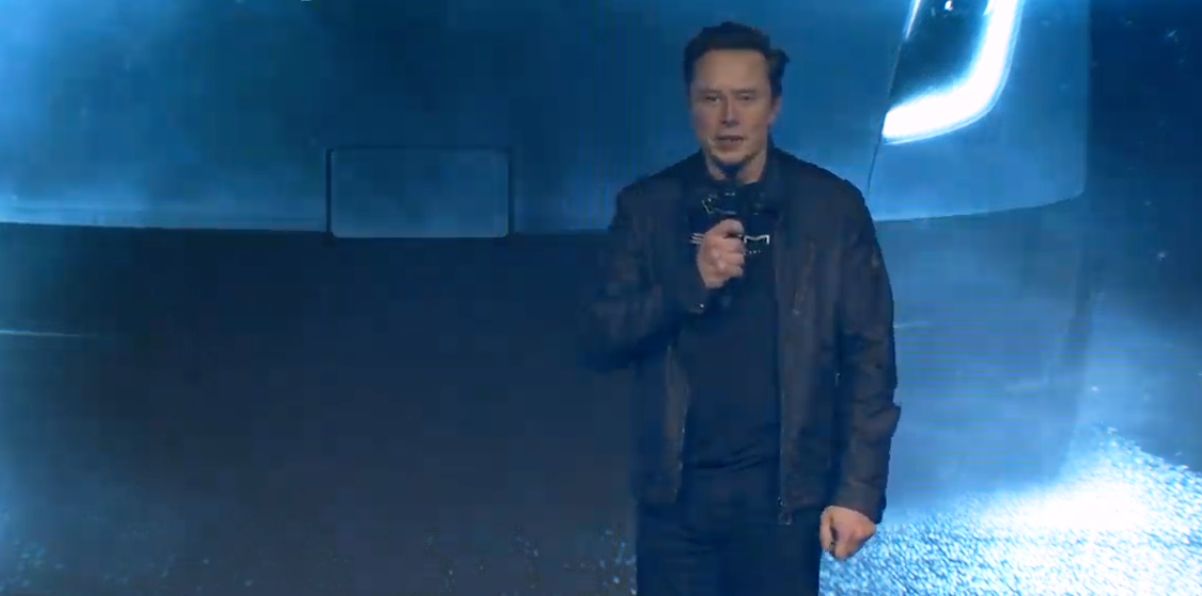SPARKS, Nev. — Five years after Tesla first showed its battery electric Semi speeding across the tarmac at an airport in Hawthorne, Calif. chief executive Elon Musk hitched a ride in the first production version at the Gigafactory, where it is being assembled in Sparks, Nev.
“I can’t believe it’s been five years,” Musk told a crowd of cheering fans, who were invited to watch Tesla deliver its first Semis Thursday night to PepsiCo. “A lot has happened in the world, but here we are and it’s real.”

On Nov. 25, Tesla drove its new Semi 500 miles from Fresno to San Diego without recharging. PepsiCo also used one of the new big rigs to deliver a load of Frito-Lay snacks from its factory in Modesto to Tesla’s Nevada facility in time to share them for the Semi’s coming-out party.
“Nothing like this happens without amazing people,“ PepsiCo Beverages North America chief executive Kirk Tanner said to the crowd. “I just want to thank the people who spent countless hours to make this a reality.”
PepsiCo is one of dozens of companies that have placed thousands of pre-orders for the new Semi. Available with two different battery packs, it can travel either 300 or 500 miles per charge. Driven by an industry-first 1,000-volt powertrain, the Semi can accelerate from 0 to 60 mph in 20 seconds, speed up a 5% grade at highway speeds and charge up to 70% of its range in 30 minutes, the company said.

“It looks sick. You want to drive that,” Musk said of the Semi’s sleek, modern and aerodynamic profile. “That thing looks like it came from the future. It’s like driving a Tesla. Literally.”
Unlike a diesel truck, which has multiple gears, the Semi has a single-speed transmission. Drivers just press the accelerator and go. And when they travel downhill, they can also recoup some of its kinetic energy and feed it back to the battery with regenerative braking.
“It’s as easy to drive as a Model 3. With no training, you can drive this,” Musk said. “You have to think bigger when you’re driving it, but it’s not hard.”
Powered with the same powertrain as the Plaid version of the Tesla Model S and Model X, one motor is constantly engaged for maximum efficiency. The other two are for torque and acceleration. The entire weight of the truck is moved with a single motor on one axle.
“You can pull 82,000 pounds at cruise using a tiny little motor” that fits in a suitcase, Musk said.
The Semi has a gross vehicle weight of 82,000 pounds — 2,000 more than a traditional diesel truck — which federal safety officials allow to accommodate for the extra weight of the batteries. The Semi day cab attaches to its trailer with the touch of a button to save time and money, and work together as an aerodynamic unit.
The Semi will recharge using a new 1-megawatt DC charging system that is liquid cooled, so the charging cable is smaller — similar to what many Tesla passenger vehicle drivers would use at a Supercharger station. Musk said the same 1-megawatt DC charger will be used for the upcoming Cybertruck.
Electric being more efficient than diesel, the Semi can save up to $200,000 in fuel costs over three years, according to Tesla, which is also helping its customers install solar panels to charge their trucks and battery energy storage units to hold the excess electricity they generate.
Musk acknowledged that building a Class 8 truck might not seem in keeping with a company that has so far made luxury passenger vehicles, especially since so few semi-trucks are sold in the United States each year. About 200,000 big rigs are sold in the U.S. annually compared with 15 million passenger vehicles.
“It seems like a small percentage, but it’s 20% of U.S. vehicle emissions because it’s a huge vehicle being driven all the time,” Musk said. “Our mission is to accelerate the advent of sustainable energy, which is why we make a wide range of cars that don’t make sense from a traditional standpoint, but they make total sense when you consider the mission of our company.”
Tesla says it will use the new Semis in its own fleet to transport goods from their factories and suppliers. He said the Semis will run 24/7 between Sparks, Nev., where it assembles its battery packs, and Fremont, Calif., where it builds many of its passenger vehicles.



